You
may not find this terribly rewarding unless you're included here, so this
is a good time for casual and random browsers to turn back before they
get too caught up in the sweep and majesty of the proceedings and can't
let go.
Naples has got a gajillion museums, but we haven't got time for the little shopfront museums of baseball, rock and roll, sausage casings, Enrico Caruso, and 19th century spoons, or the world's biggest zucchini. We're going to the Museo Archeologico Nazionale first, and then up the hill to retrace our steps through the Museo Nazionale di Capodimonte.
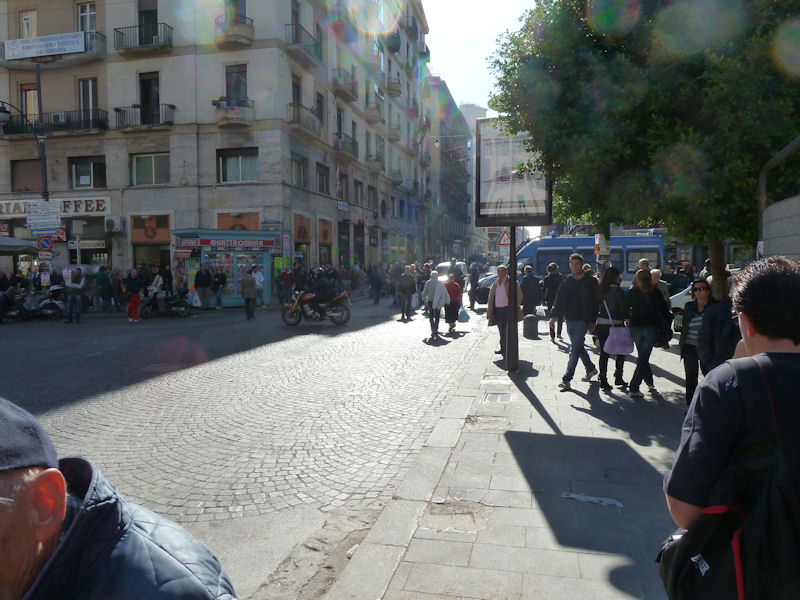
On our walk uptown on the Via Toledo, we pause in the Piazza Carità to look back at what seems to be a significant police presence arranging itself.
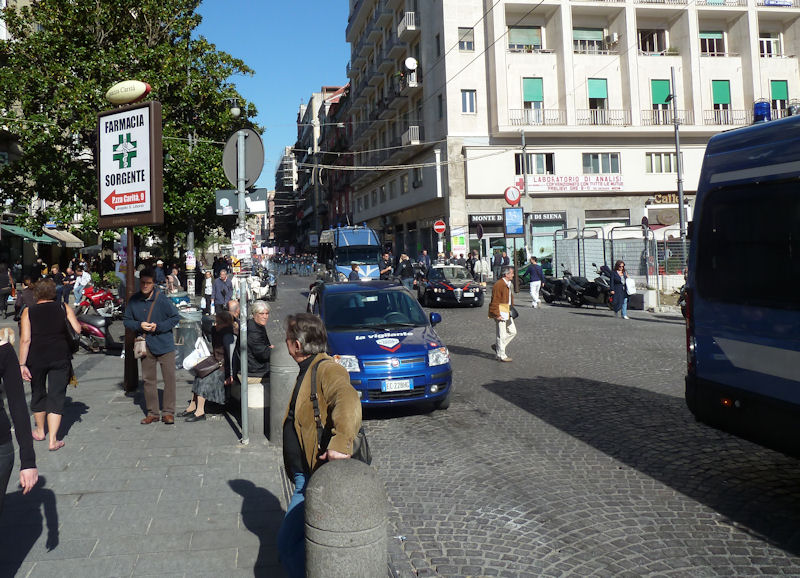
Yes, too true. Looking uptown, more police presence. What's up?
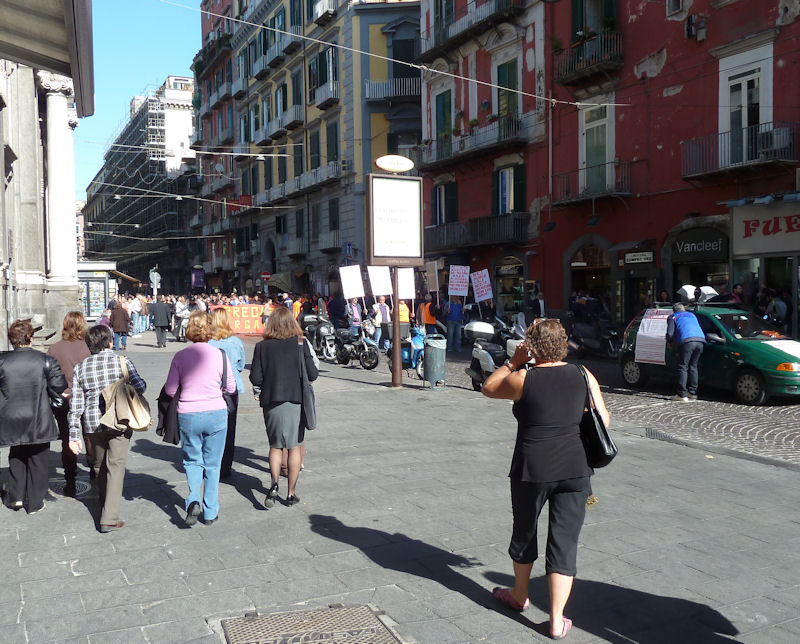
Here we are -- a good-natured crowd with signs and banners, not going anywhere at the moment but probably debating a plan.

At the Piazza Dante and all about, there's significant impatience, everyone leaning on their car horns. We'll be out of the Archaeological Museum again long before these folks get back to their commuting.
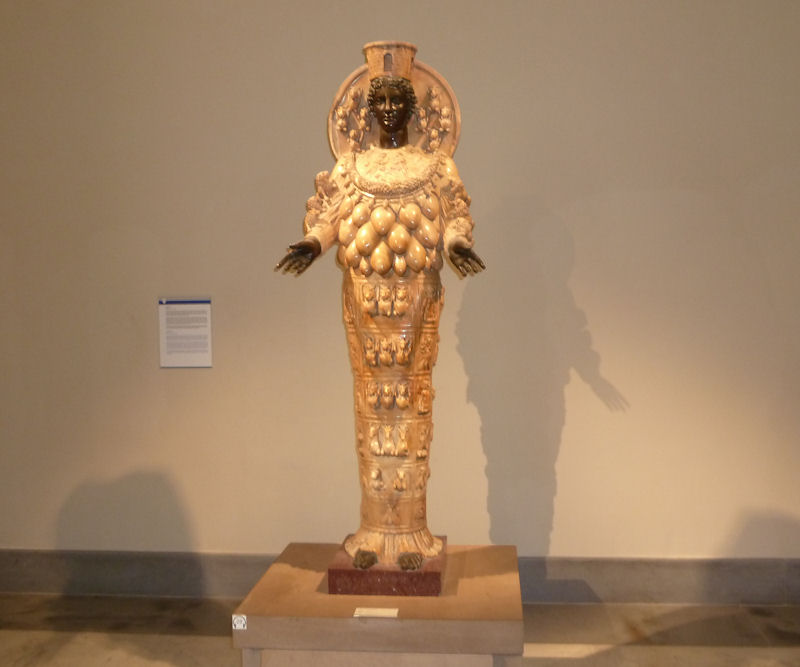
Welcome to the Museo Archeologico Nazionale, an old military post transformed into the University of Naples and finally, in the 18th century, this. The Bourbon lord, Ferdinand I of the Two Sicilies, inherited the Farnese Collection of ancient art (via Pope Paul III, the 16th century Farnese collector) through his grandmother and planted it all here.
The next time you run into a lady showing off her new dress made of bull scrotums, think back to this ancient fertility-related goddess, Artemis of Ephesus (we disdain the tired old story that those are supernumerary boobs).

The paintings in the Farnese Collection were removed up the hill to the Capodimonte museum in 1957, and there are many other odd bits and bobs throughout the eight million rooms here, but the highlights of the museum are the Farnese Greek and Roman sculptures and sarcophagi, and the frescoes, etc., taken off Pompeii and Herculaneum.
Those cavorting chaps in the centre, without their shorts, should look familiar -- there's a bronze copy at the Villa Cimbrone in Ravello, with Lord Grimthorpe buried under it.
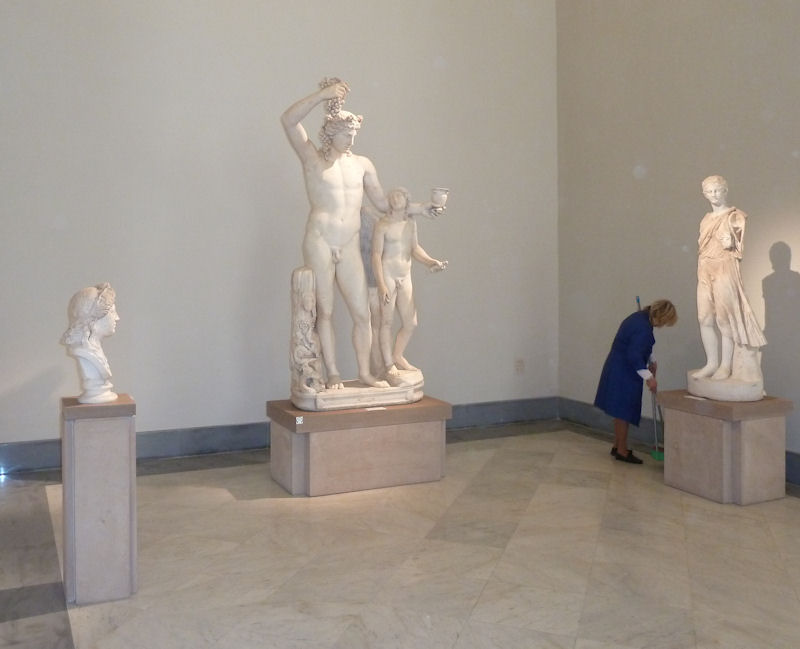
There are many more of these nude pals with significant age differences, usually holding up bunches of grapes. The cleaning lady is used to it by now.
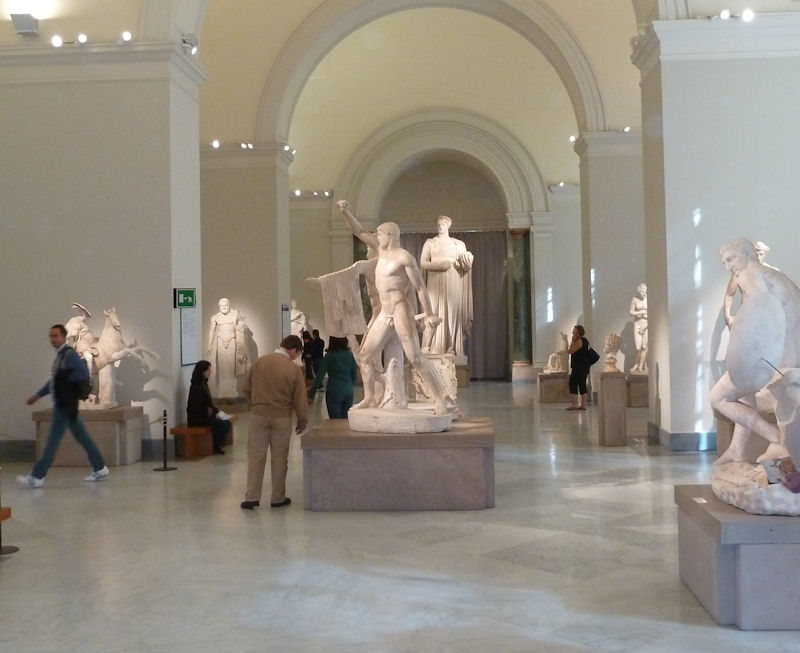
The Tyrannicides are gung-ho to get out there and fight for their trousers.
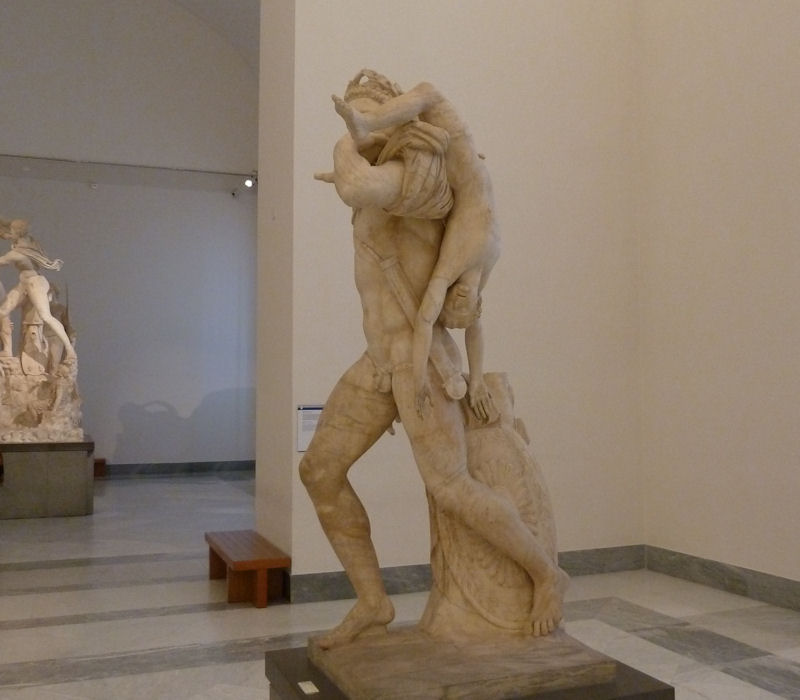
-- Put me down now. I'll call the hall monitor!
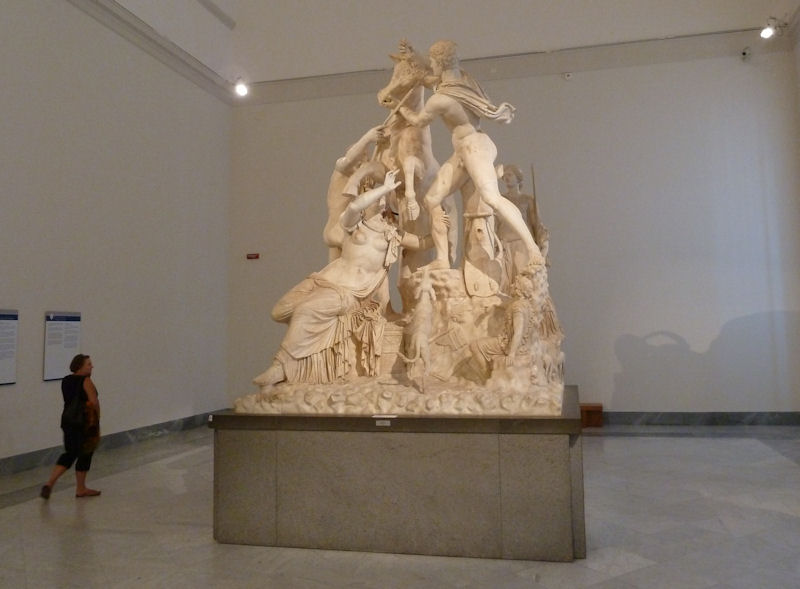
The museum's best piece, and the largest single-block sculpture from antiquity -- the 'Farnese Bull' captures the plight of Dirce, who mistreated Antiope of Thebes and got herself tied to a wild bull by the lady's vengeful sons.
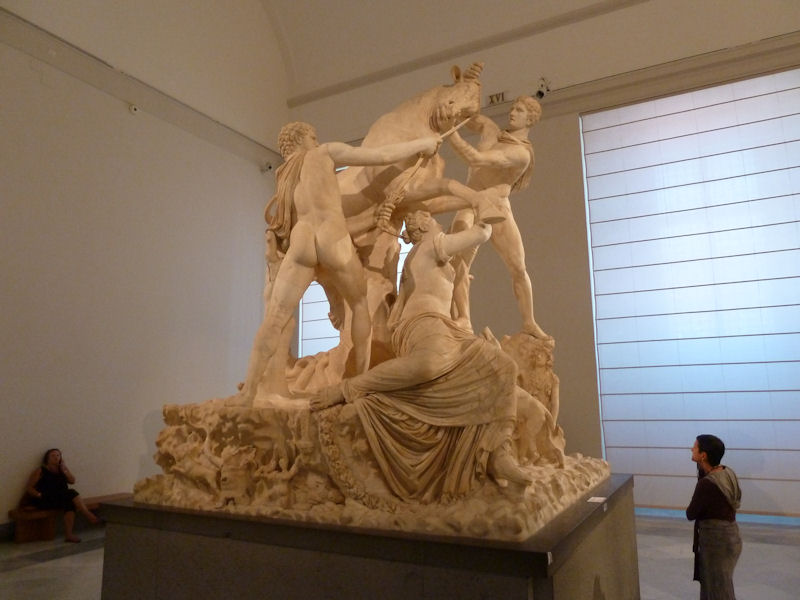
This thing was found in 1546 during excavations in the Baths of Caracalla in Rome by the Farnese Pope, Paul III, who had diggers out all over the city delving for loot.
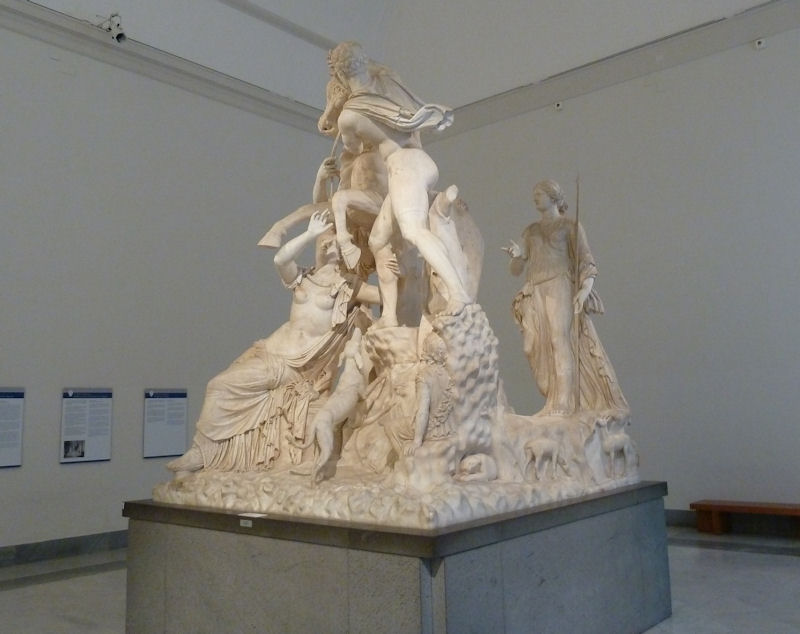
It's an amazing thing, though a bit overwhelming -- made on Rhodes in the 2nd century B.C. and once owned by Pollio, the poet and soldier. Antiope's vengeful sons normally took off their trousers before seeking vengeance.
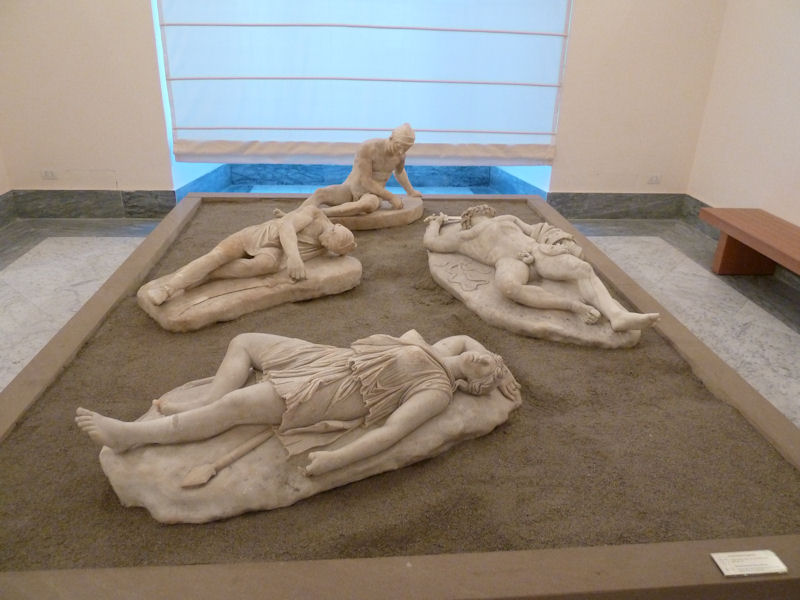
This is very grim.
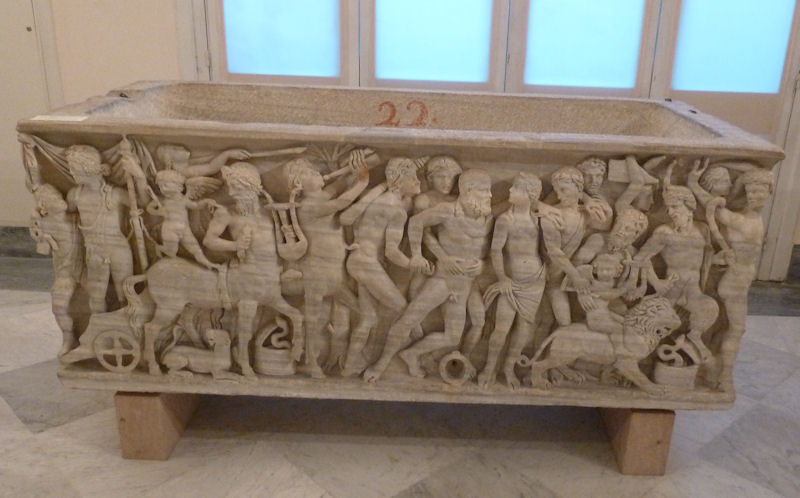
Boys night out
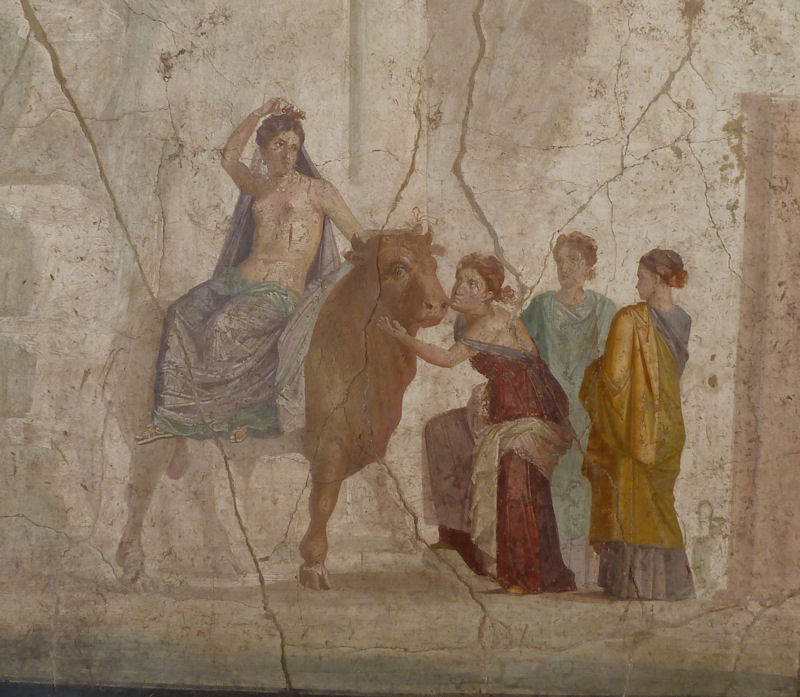
-- Europa, get off that thing. You'll get hurt up there.
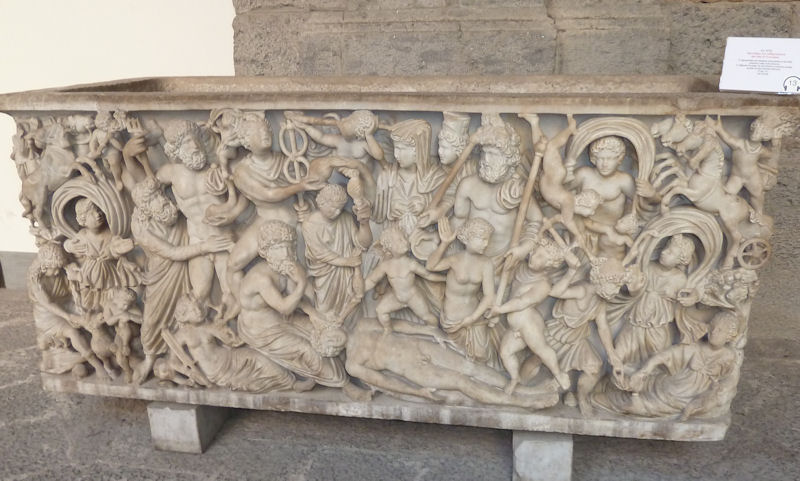
All the ancient gods working hard at creating humanity, breathing life into that poor sod if at all possible.
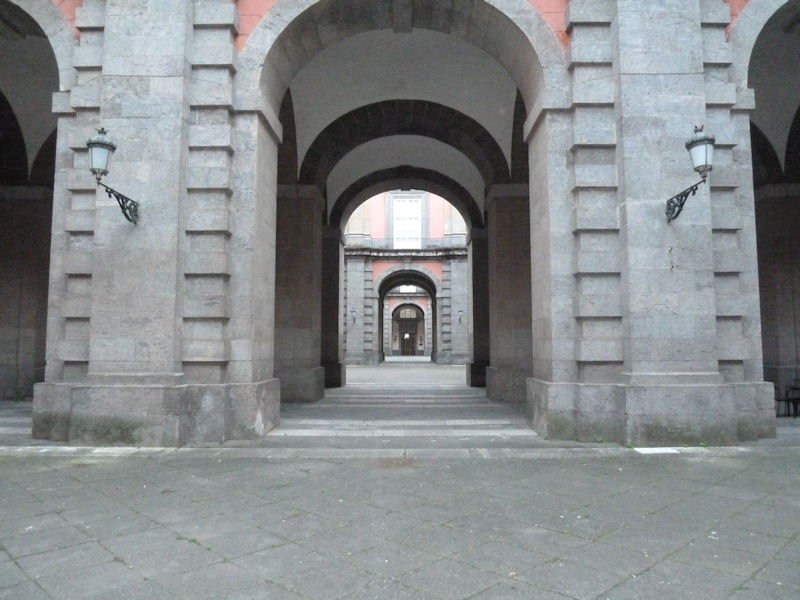
We're exhausted by all those huge statues and what not, so we've been up the city bus to the Museo di Capodimonte again. The building was a royal palace for the Bourbons, built in 1738 and very squat and ugly, but the paintings collection is fabulous.
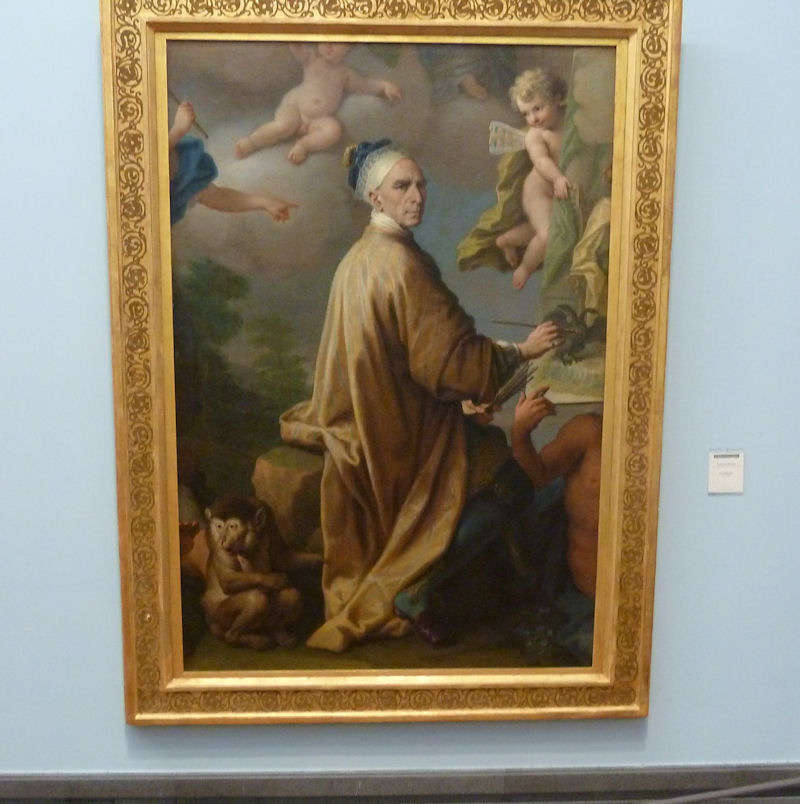
Especially this neglected treasure, a self-portrait of a humorless Neapolitan painter, Paolo de Matteis, made in about 1714, fairly unremarkable in himself but possessed of a pet that grabs the viewer's attention and distracts him or her from the question of why Mr Matteis chose to surround himself with naked children flying about his head.

This is perhaps the most meaningful small portrait ever made.
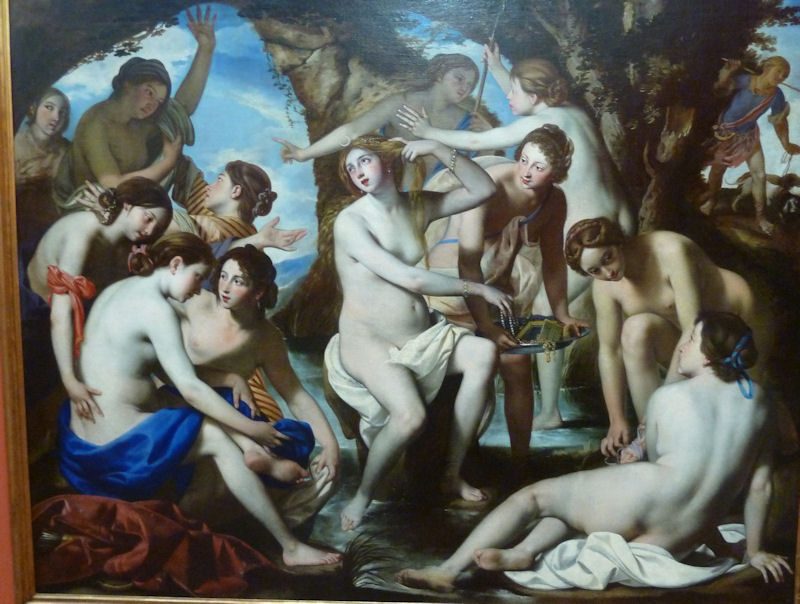
Girls night out

-- This isn't that kind of party, David. You'll have to leave your friend outside.
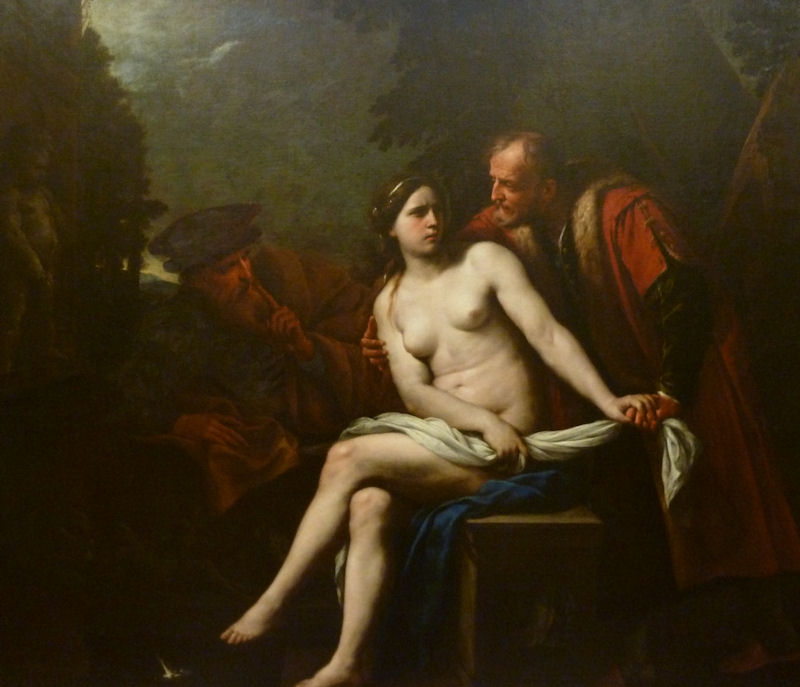
-- Are you kidding? No way!
(Susannah)
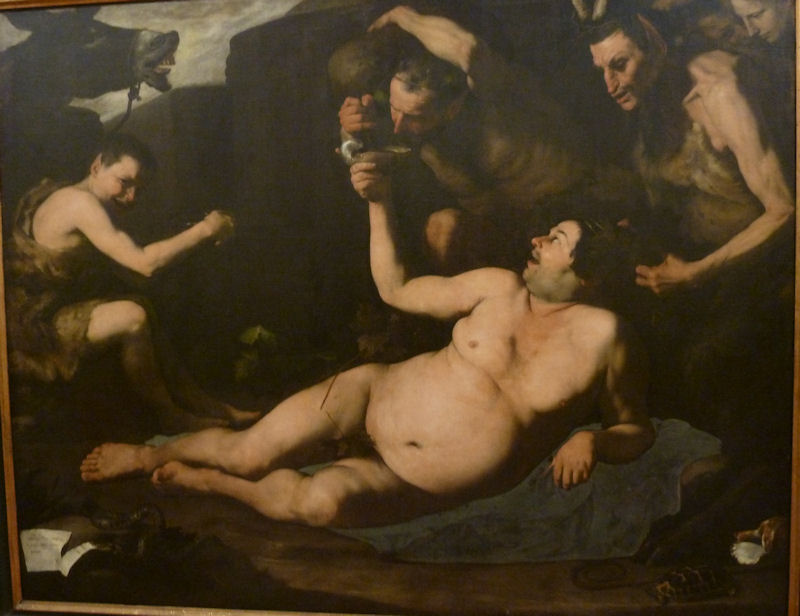
-- Oh, all right, just one more, I'm driving.
(Silenus, by Jusepe de Ribera, 1626)
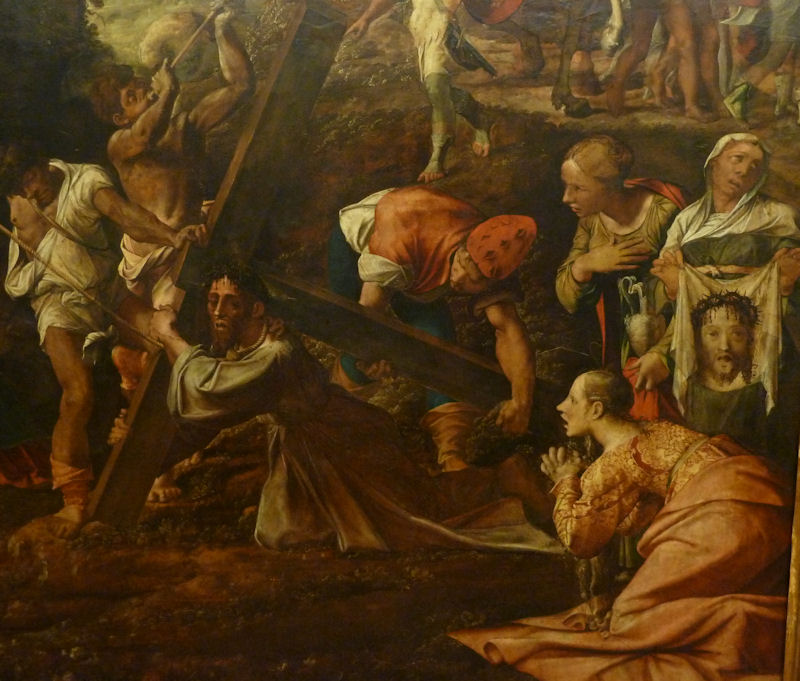
Veronica's napkin
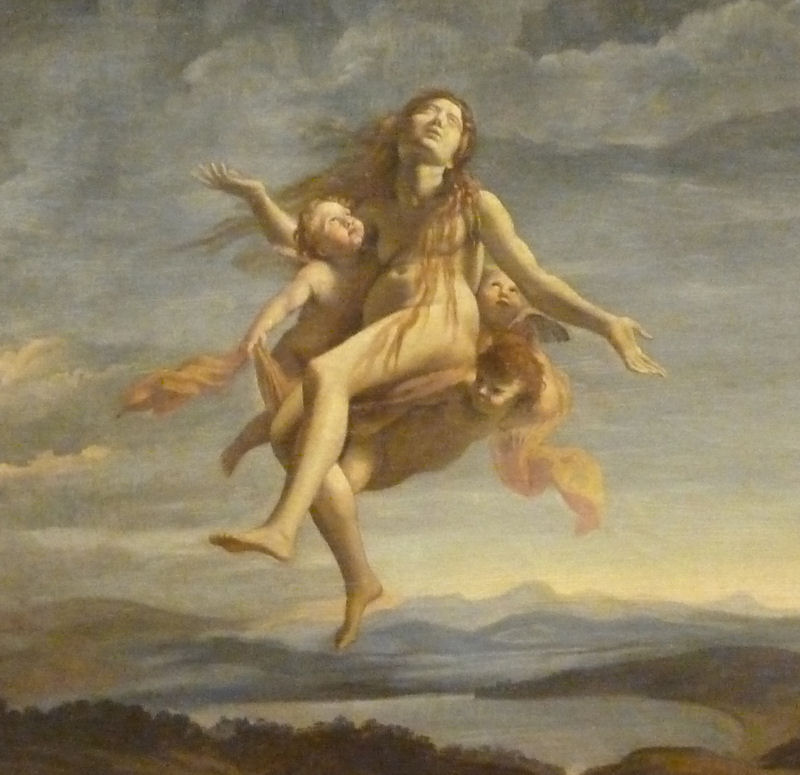
What really happened to Mary Magdalene? -- the naked kids got her.
(Assumption of Magdalene, by Giovanni Lanfranco, ca. 1605)
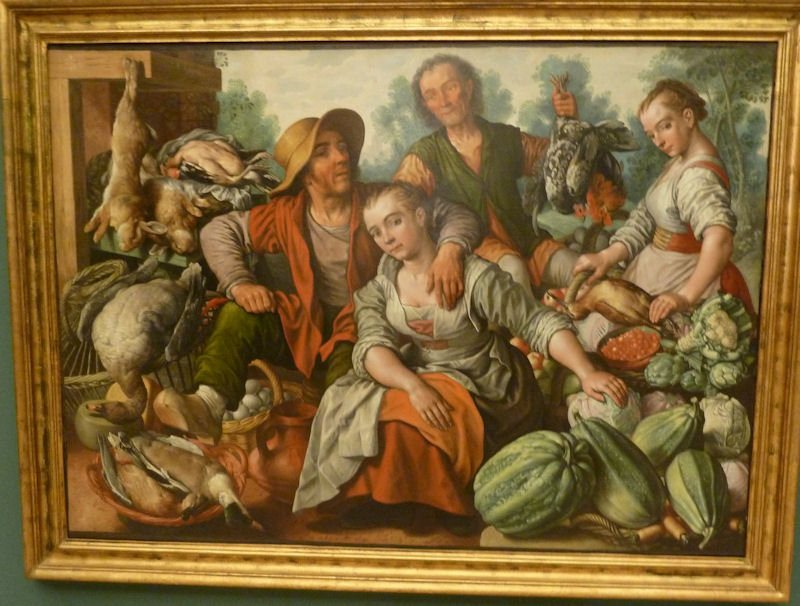
Capodimonte excels in wonderful, neglected artists from Naples, but there are some canonical greats here, too: like (ready?) Bellini, Botticelli, Caravaggio, El Greco, Mantegna, Masaccio, Raphael, Titian, Van Dyck, and my favorite: Brueghel (including The Blind leading the Blind, but my photo of it reflected back mostly me) -- and there's this guy!

We'd never heard of him: Joachim Beuckelaer of Antwerp (1533-1574), who loved the peasant and city trades and all the civic detail.
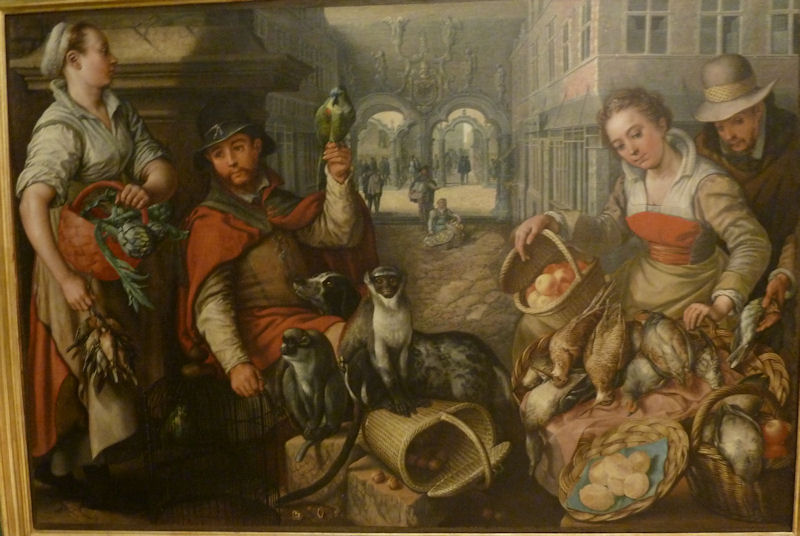
There are five or six big pictures here, obviously a series, but no word about how they got into this collection.
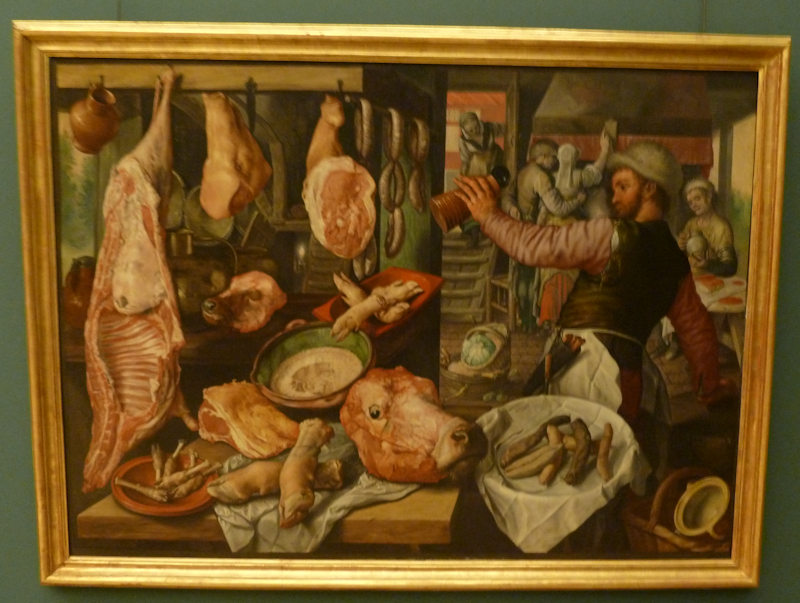
Still another Beuckelaer
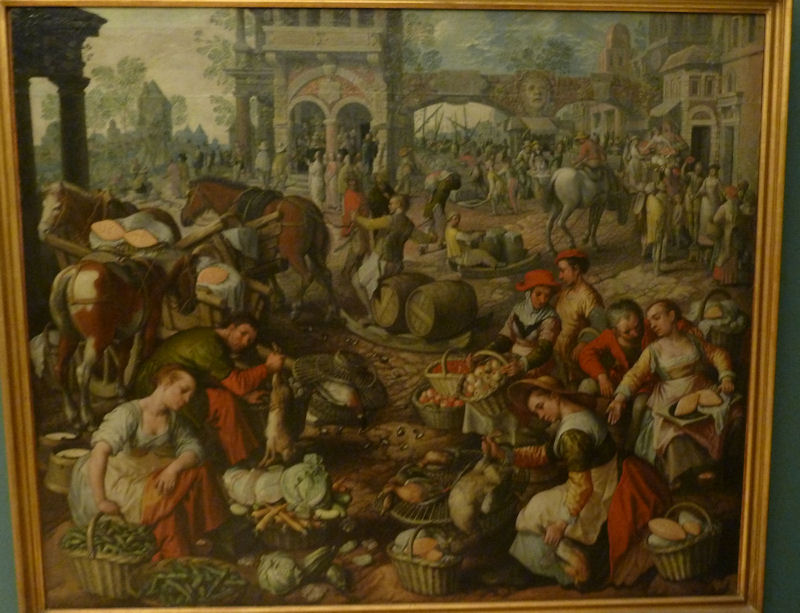
Sorry for the blurriness (no flash allowed, for very good reasons), but Mr Beuckelaer has made our whole visit worthwhile. Which it was already, but even better.
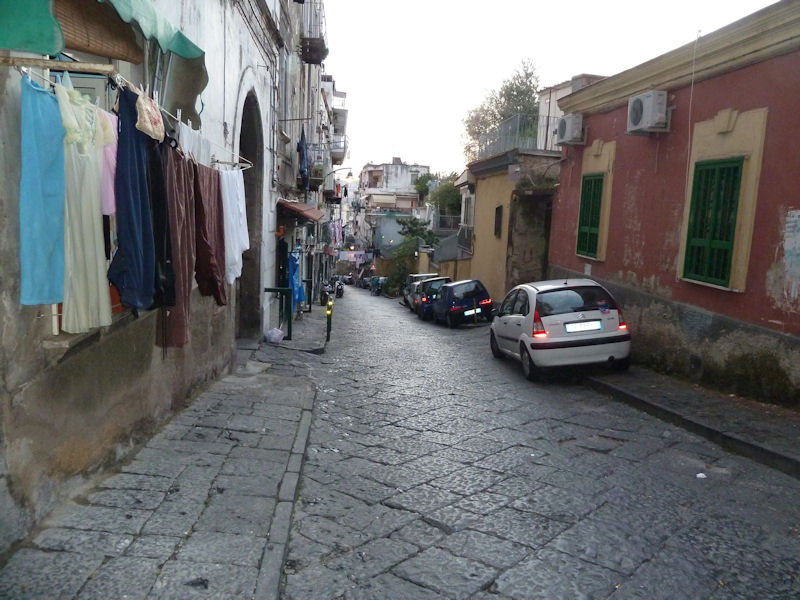
Exhausted, we're on the road down through the neighborhoods from the Capodimonte hill into the old town.
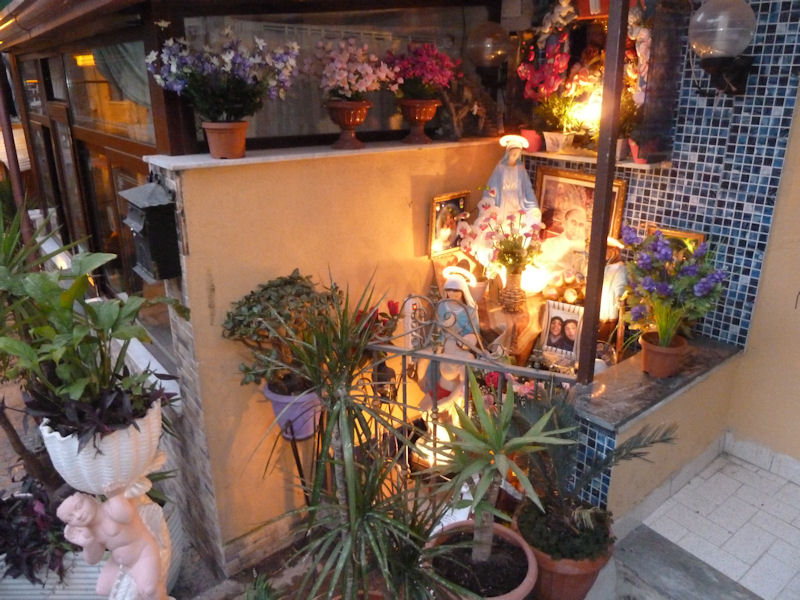
A roadside shrine along the way
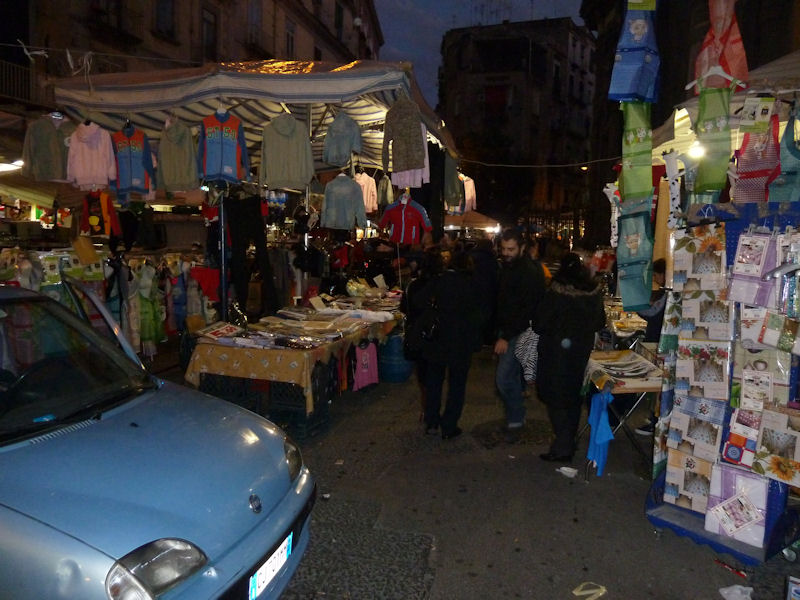
Another street market as we tumble into the old town at dusk
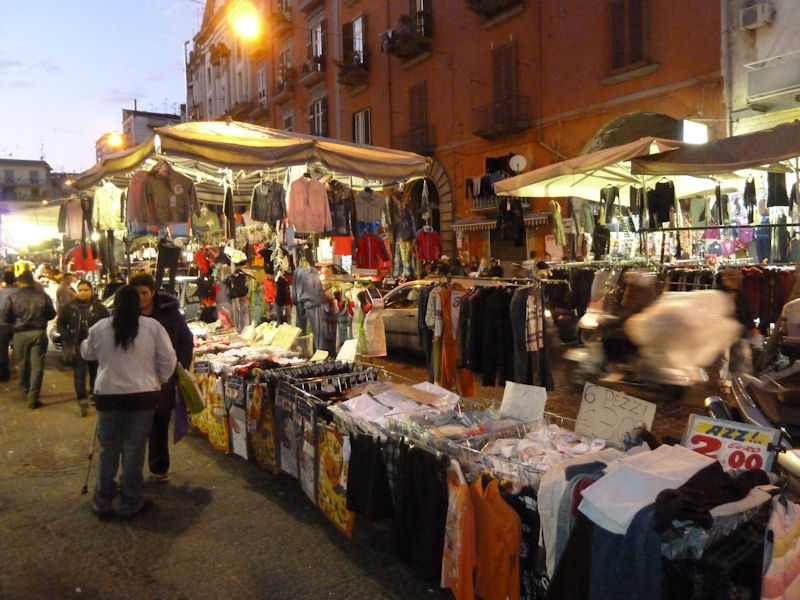
Motorscooters blurring up the centre of the street amongst the bargains on offer.
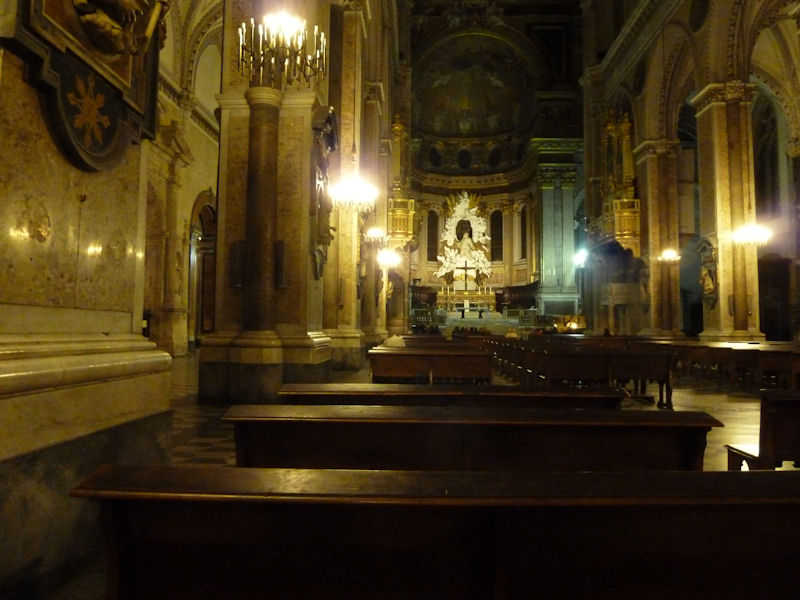
The Duomo, the Cathedral of San Gennaro, i.e., Saint Januarius, the patron saint of Naples. It was built by the Angevin overlords in the early 14th century.

A vial of the dried blood of San Gennaro is brought out on special dates and usually liquifies for the throngs crowding in to see it. It's evidently an iron-based concoction that liquifies when shaken. There's a fantastic baptistry here with 4th century mosaics, but my sneaked no-flash photos were truly disappointing.
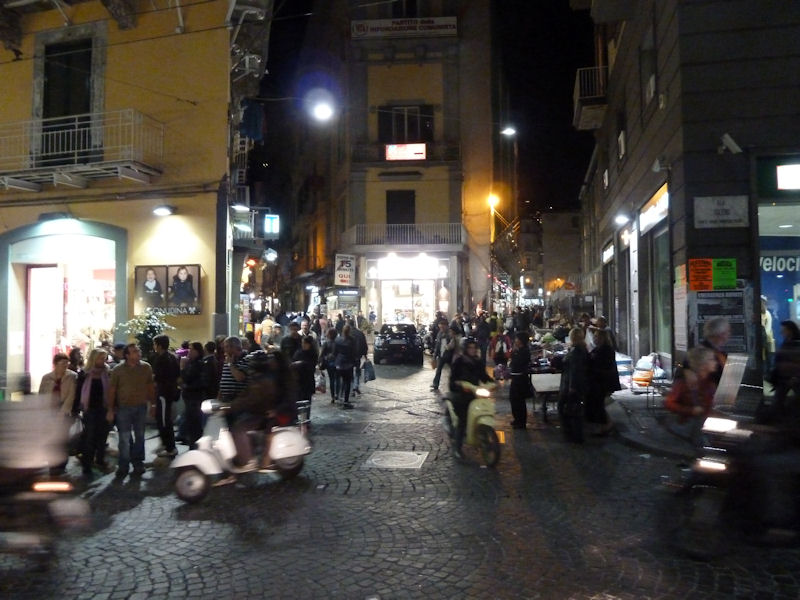
Neapolitan bustle never slows down.
 Dwight Peck's personal website
Dwight Peck's personal website





































